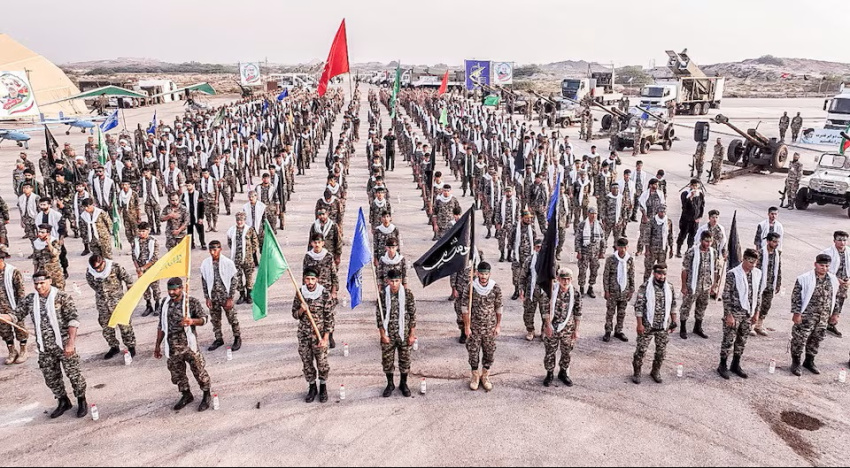IRGC and the Power of Imagery: Strengthening Iran's Authority in the Media Battlefield

Amid the intensifying crimes of the Zionist regime in Lebanon and Gaza, the British government, under the pretext of the successful Operation True Promise 2 and in support of the Zionist regime, imposed sanctions on several senior military officials and institutions of our country. Among the sanctioned figures, the name of Brigadier General Ali Mohammad Naeini, the spokesman and head of the public relations department of the Islamic Revolutionary Guard Corps (IRGC), is particularly notable.
The inclusion of the IRGC's spokesman on the sanctions list, especially following a successful cross-border operation, underscores the IRGC’s significant achievement in leveraging media power to build national deterrence and reinforce Iran’s authority. This has led Iran's enemies to target this strategic capability in an attempt to weaken its impact.
Operation True Promise 2, one of the most historic cross-border operations conducted by Iran’s armed forces, is not only recorded as a successful missile strike against Zionist regime positions but has also emerged as a symbol of the Islamic Republic of Iran’s honor and strength on a regional and global scale. This operation, carried out in response to Zionist terrorist activities, showcased Iran’s advanced missile and defensive capabilities, shattering Israel's false sense of security and garnering widespread international attention.
The recent sanctions clearly indicate that what transformed Operation True Promise 2 into a significant milestone in modern Iranian military history was its strategic and intelligent media coverage. The IRGC's media and public relations department, with careful planning, not only conveyed the military message of the operation transparently and promptly to both domestic and international audiences, but also managed to project a powerful image of Iran’s defensive strength on the global stage. This compelling image highlighted Iran's determination to protect its national interests, further enhancing the country's deterrence against foreign threats.
The IRGC’s success in this domain reflects a deep understanding of the crucial link between media and military operations. By harnessing media capabilities, the IRGC presented a clear picture of Iran's military prowess, solidifying the country's position as a regional power. This achievement was the result of a smart and strategic engagement with media outlets, crafting precise and credible narratives that resonated positively with global public opinion.
This new approach stands in stark contrast to outdated, traditional methods, showing that in today's world, military victories are no longer solely measured by battlefield casualties or territorial gains, but by the ability to shape public perceptions both domestically and internationally. Media, as key players in modern conflicts, hold the power to either strengthen or weaken military strategies. The IRGC and its public relations team, understanding this reality, have utilized media power to enhance Iran’s defensive deterrence, as evidenced by their handling of Operation True Promise 2.
The experience of Operation True Promise 2 demonstrated that the success of a military operation extends beyond the hard aspects of warfare. A large part of victory lies in the media battle and the "conquest of hearts and minds." This type of victory, achieved through smart media management and accurate communication, can significantly boost a nation's deterrence.
However, when utilizing media, caution and balance must always be maintained. Overconfidence or neglecting security concerns can create challenges. Therefore, the goal of military public relations should be to present a balanced and realistic image of military power—one that showcases both determination and professionalism, while also respecting security protocols.
In conclusion, in the modern era, the success of armed forces is not only determined on the battlefield but also in the media arena, where victory in the 21st century is shaped by winning hearts and minds. In this crucial space, media and public relations play an essential role. Fortunately, the IRGC’s public relations department, with a scientific and strategic approach to information dissemination, has played a pivotal role in reinforcing national strength and enhancing Iran’s defensive deterrence.

